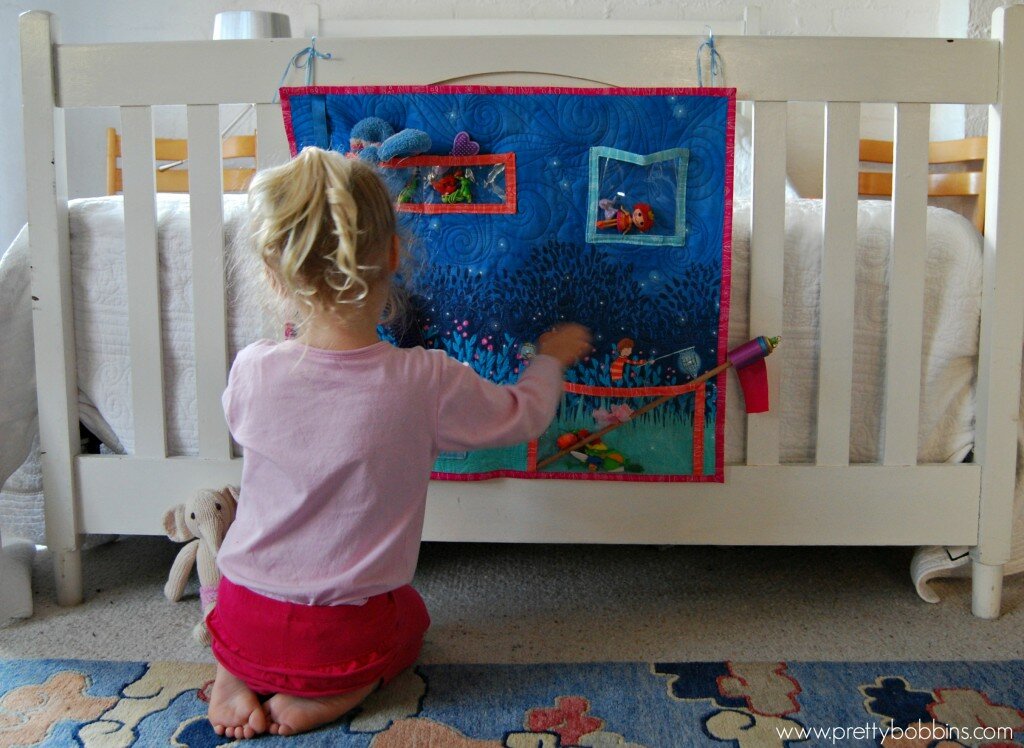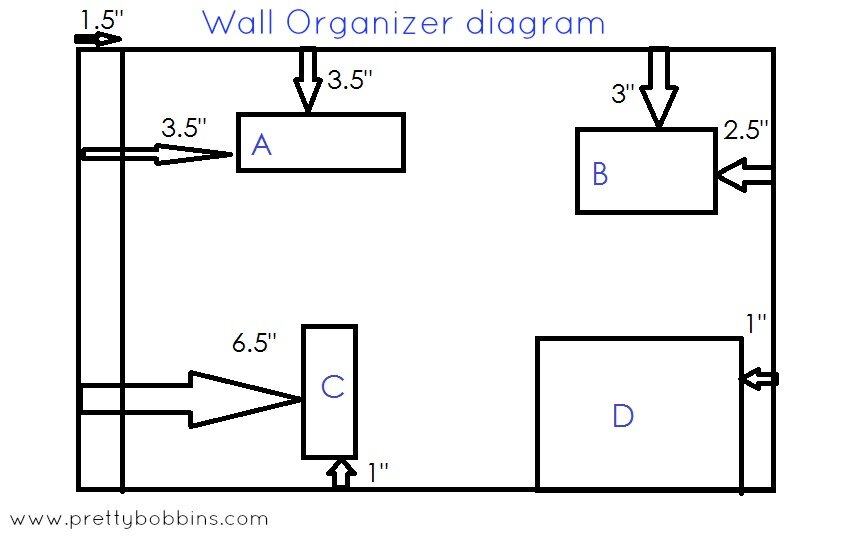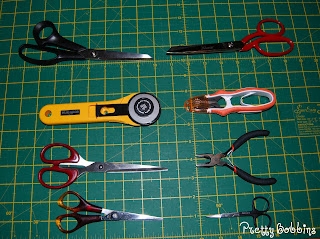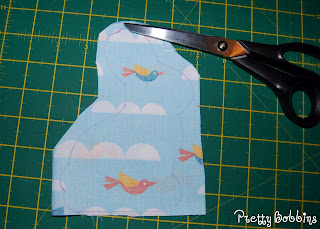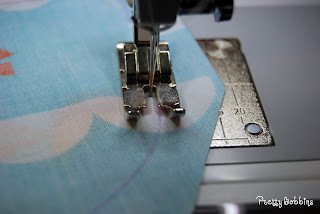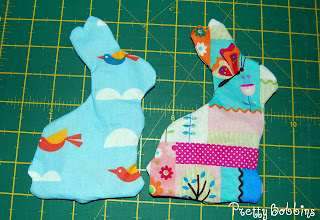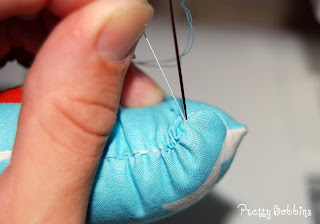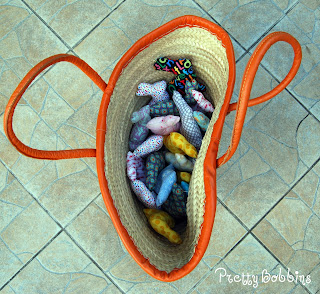I still haven’t finished the project that I mentioned in my last post. I really want to share it with you, but it will be much nicer once it is all finished so I’m doing my best not to blog about it yet  So here is the tutorial on bias binding that I did for the lovely Oz Material Girls, you can find their blog here and their online fabric store http://theozmaterialgirls.com.au/ . I hope you find it useful
So here is the tutorial on bias binding that I did for the lovely Oz Material Girls, you can find their blog here and their online fabric store http://theozmaterialgirls.com.au/ . I hope you find it useful 
I’m so excited to have been asked by the lovely Oz Material Girls to write a guest post for their blog. I’ve been sewing for almost as long as I can remember and before that I used to sit on my Mum’s machine cover and pretend it was a horse while I watched her sew. You can find my blog about sewing adventures
here. I think everyone can sew, you just need to give it a go and then practice, practice, practice!
Whilst I’m not the most experienced quilter by a long shot, I wanted to share something quilting related with you as The Oz Material Girls stock so many lovely quilting fabrics. Of course bias binding has many uses, including on clothing and accessories, so hopefully this tutorial will help lots of people.
I call this method of bias binding the “cheat’s method” as it is so easy and looks fantastic. That’s definitely not a bad thing, but we are cutting a few corners here

I’m making a mini quilt for my daughter’s dolly’s bed, but this method will work on any size quilt or any item where you need to use double folded bias binding. The one down side to this method is that it does eat a little bit more fabric, about half an inch on each strip as you cut it. But I think all of the positives far outweigh that one negative.
Once you have your quilt ready to go, measure how much binding you need. I do this by measuring the four sides, adding them together and then adding say 6″. It’s always better to have too much binding than to run out!
Whilst you don’t actually need bias binding if you’re only doing straight lines and corners, it is good to be in the habit of cutting your binding strips on the bias. You do this by cutting on a 45 degree angle from your selvedge.
Lots of fabrics have a printed selvedge but the one I was using doesn’t. If you look really closely you can see that the selvedges are neatly woven edges rather than being cut raw by scissors.
 |
| Note the woven (not raw) edge? This is a selvedge. |
I want my binding to be about 1/2″ wide on both front and back of the quilt so I need to cut my strips 2 1/2″ wide.
Usually you will need to join a number of strips together to get the required length of binding. Do this by placing the ends of two strips right sides together at right angles.
Sew a stright line at a 45 degree angle. I just use my eye but you can draw a line with a fabric marker as a guide.
Cut off your excess.
Press your seams open and cut off any excess fabric peeping through.
Once you have the required length of binding, cut both ends on a 45 degree angle, fold your ends back 1/2″ wrong sides together and press. It should look like this.
Now you need to fold your strip in half lengthwise wrong sides together and press.
It is now starting to look more like binding.
Now lay your binding on the front of your quilt 1/4″ in from the raw edge of the quilt top. It is best to start your binding on a straight edge, at least a few inches away from a corner. It just makes everything easier. In this example I laid my binding on the back of my quilt as I was using a minky backing and it is slippery stuff. I would much rather machine sew the minky side and hand stitch the cotton side. Just remember that the side you choose to machine stitch will be “invisible” which is why I would normally lay my binding on the front of my quilt at this step.
Pin in place. Keep going until you meet a corner. Just to be conclusive I’ll give you a quick guide to mitred corners.
 |
| Mitred corner |
A mitred corner gives you a lovely smooth corner and a great looking finish. It can be a bit confusing the first time, but don’t be put off. It’s actually really simple once you get the hang of it!
Take your quilt to your sewing machine. I want my binding to be about 1/2″ on both the quilt top and bottom so I will be using my 1/2″ sewing guide on my foot plate. (You will notice that I have pinned my binding so that the raw edge is 1/4″ in from the raw edge of the quilt. I’m sewing 1/2″ in from the raw edge of the quilt, not the raw edge of the binding.) Make sure that you start a couple of inches in from the end of your binding. Secure your thread and start sewing using your standard straight stitch. Stop exactly 1/2″ from the corner of your quilt. Secure your thread with a few stitches back and forth.
Cut your threads and lay your quilt flat. You want to flip your binding up away from the corner that you have just hit and iron it in place. It’s really important to get everything perfectly lined up as it will give you a better finish.
Now fold your binding back on itself so it is running down the corner that you just hit. Press your binding again. It’s good to use a pin at this point or very steady fingers. You want everything to remain perfectly lined up.
Head back to your sewing machine and start sewing 1/2″ in from the end running down the next edge of your quilt. Make sure that your stitches are secure, you don’t want your lovely mitred corner to come undone! Keep going until you hit your next corner and repeat.
Without removing your needle or cutting your thread stop before you get back to start of your binding.
With your quilt still in your sewing machine you now want to slip the end of your binding into the beginning, you may need to trim off a little.
Once your bias binding is sitting nice and flat continue sewing until you reach the beginning, secure your stitches and cut your threads.
Hooray, you’re halfway there!
Now you want to iron your binding flat. Lay your quilt binding side up and press your bias binding flat.
Turn it over. It is now peeping over the edge.
Now you want to fold it over to the back of your quilt and press it flat. Go slowly. I find using my high steam setting helps. When you get to your lovely mitred corners press your binding right to the end and then straight back on itself from the other side.
You might need to jiggle the fabric a little to get that perfect 45 degree angle on your fold, but if you lined everything up perfectly when you sewed your corners it should be pretty easy

At this point just make sure that your binding is covering the stitching where you first attached it. If your binding doesn’t reach far enough don’t tug it, just trim back your quilt edge a little. Just make sure you don’t cut off your binding!
Now all that is left is your hand stitching.
You want to make sure that your binding sits nice and flat so feel free to use as many pins as you want to pin it down.
You want to begin a few inches along from the beginning. You’re stitches will get more even as you get into a rhythm.
I like to use tiny stitches to hold my mitred corners in place. I start on the side that I am handstitching,
work my way up to the outside corner,
slip a sneaky stitch through to the other side
and then continue stitching the other side of the mitred corner closed. You should be pretty much in the spot that you started but on the other side of your quilt, so just slip your needle back through and keep going.
Keep going until you get back to the beginning. Lucky me I’m only making a dolly quilt so my hand stitching didn’t take very long. For bigger projects I will do the hand stitching at night in front of the TV with a good lamp over my shoulder. I find a distraction helps with such repetitive work 
When you get back to the beginning make sure that your binding is still sitting neatly tucked inside itself. Because you started a few inches from the beginning you have a little room to jiggle it if you need to, but not much.
And voila! You’re done!
 |
| Front (hand stitched bias) |
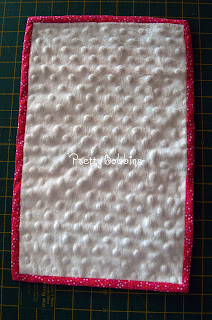 |
| Back (machine stitched) |
Yes, you could use store bought binding and machine sew the whole thing but this way the stitching is pretty much invisible. You could also hand sew the binding on both sides, but this is much more fiddly and time consuming. And that is why I call this “Cheat’s bias binding” because you get a great look and you’ve only had to hand stitch one side of your binding 
I hope you found this tutorial useful

You can find the tutorial for the Dolly’s Quilt here on my blog.
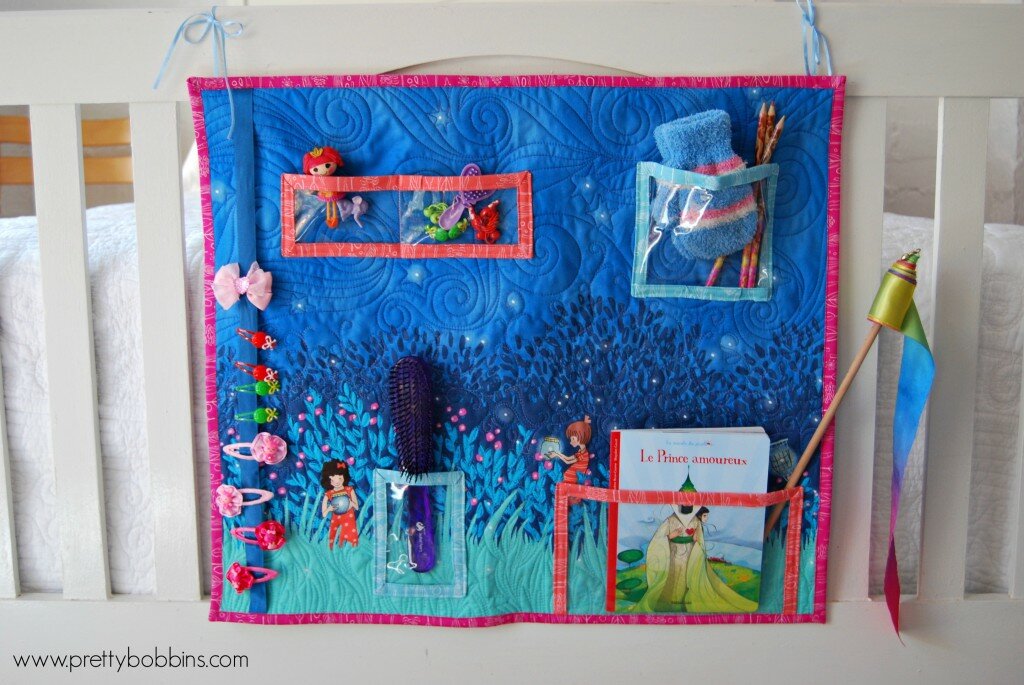

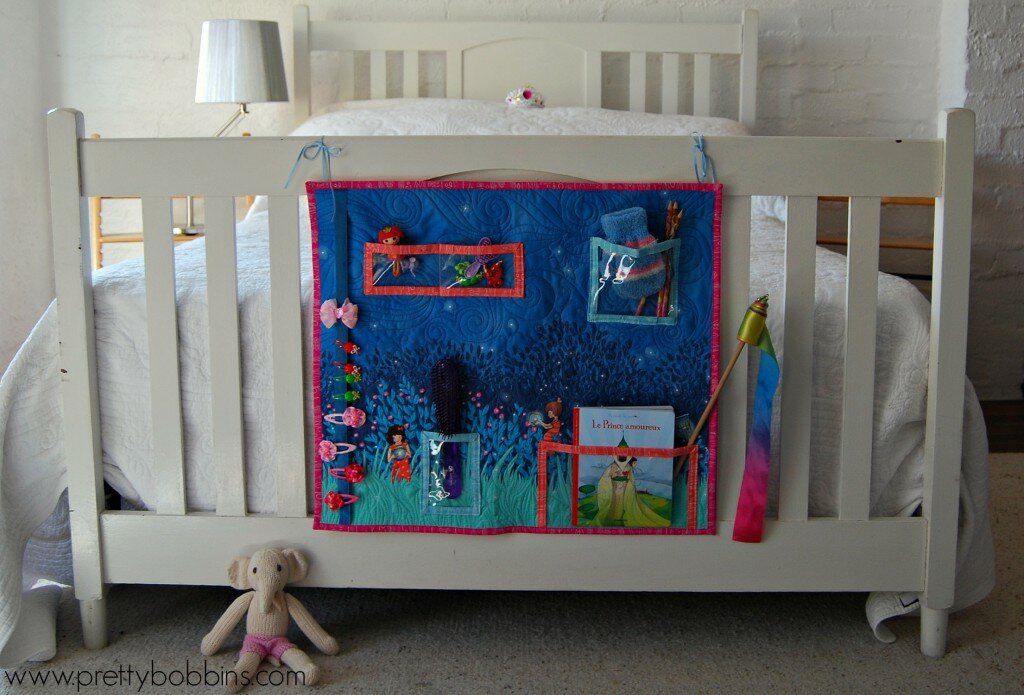
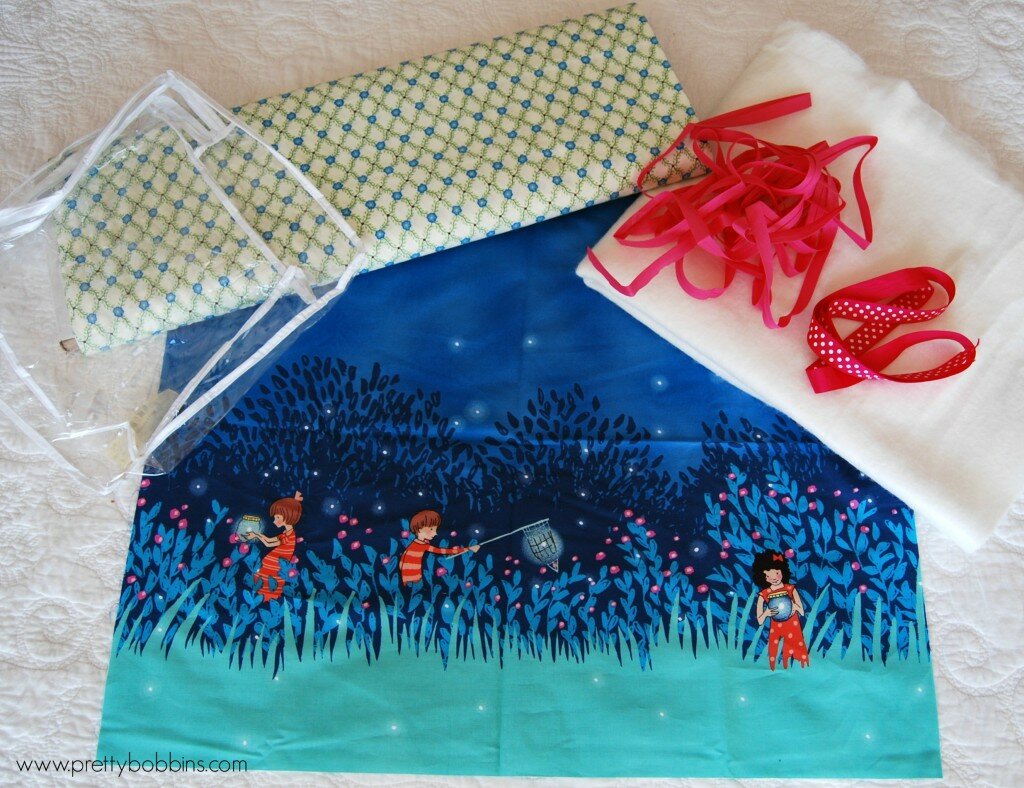
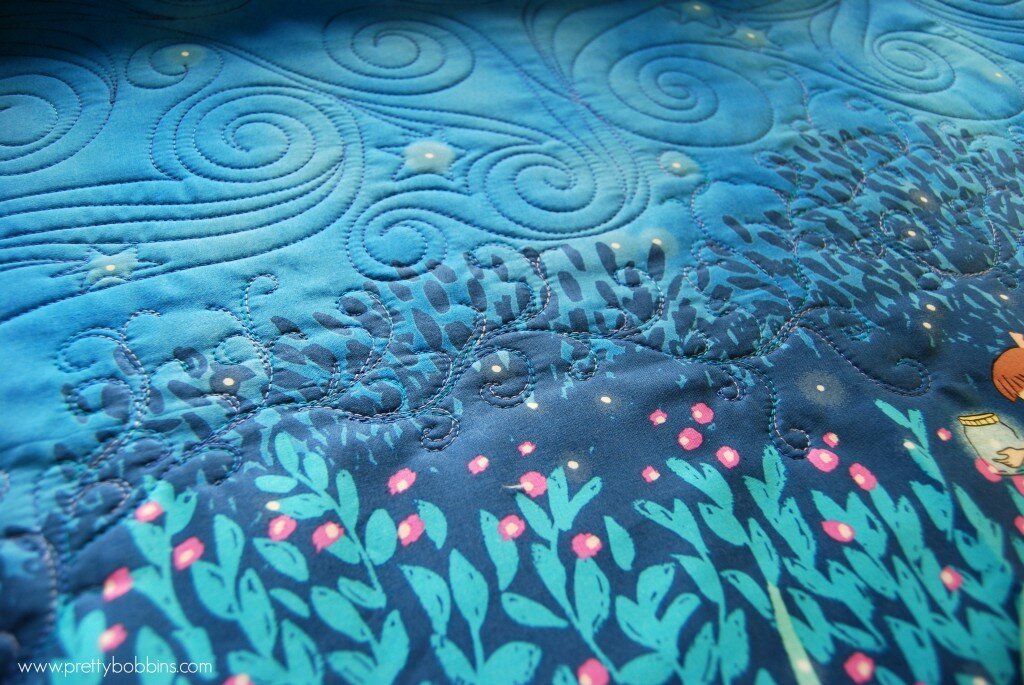
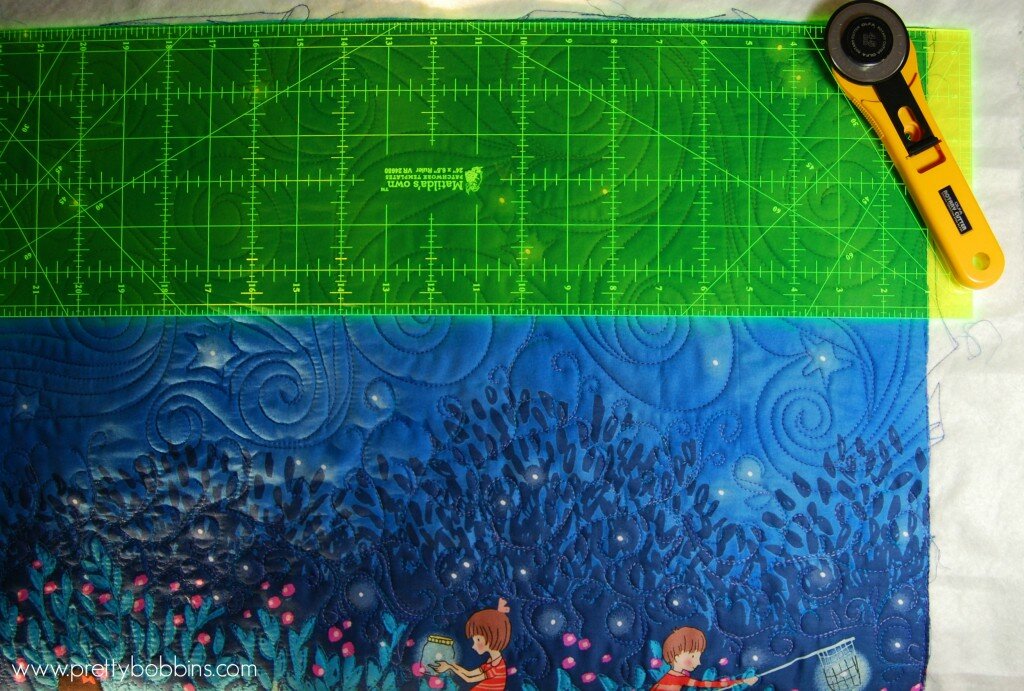

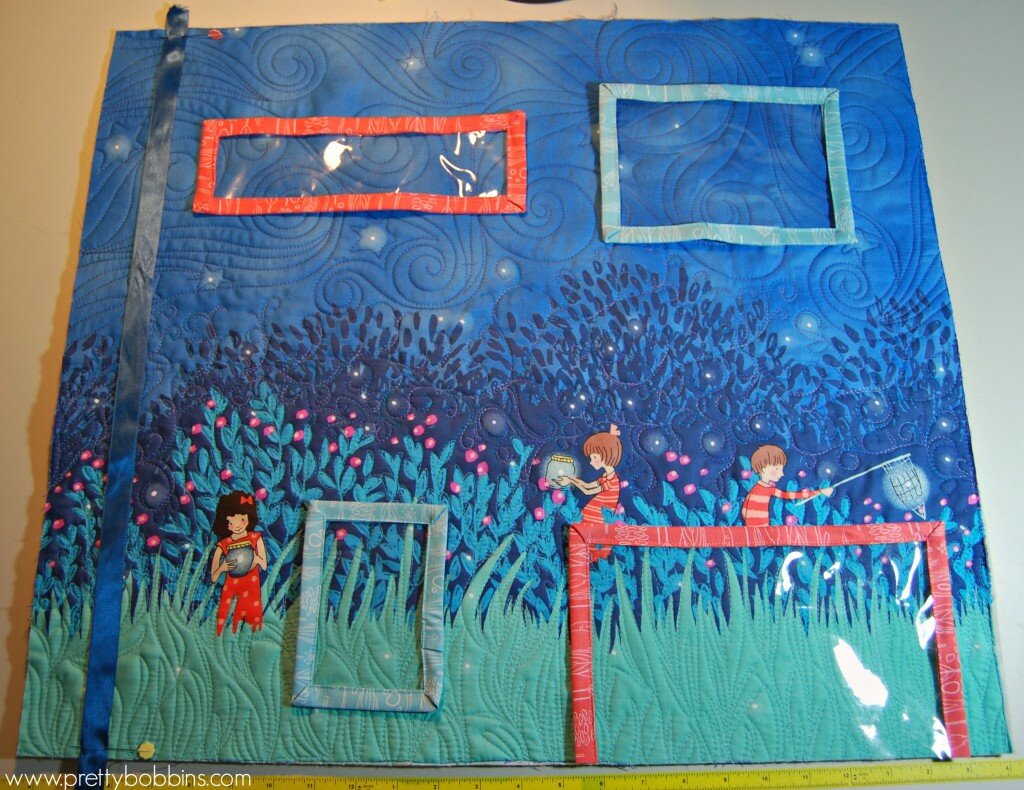
![]()
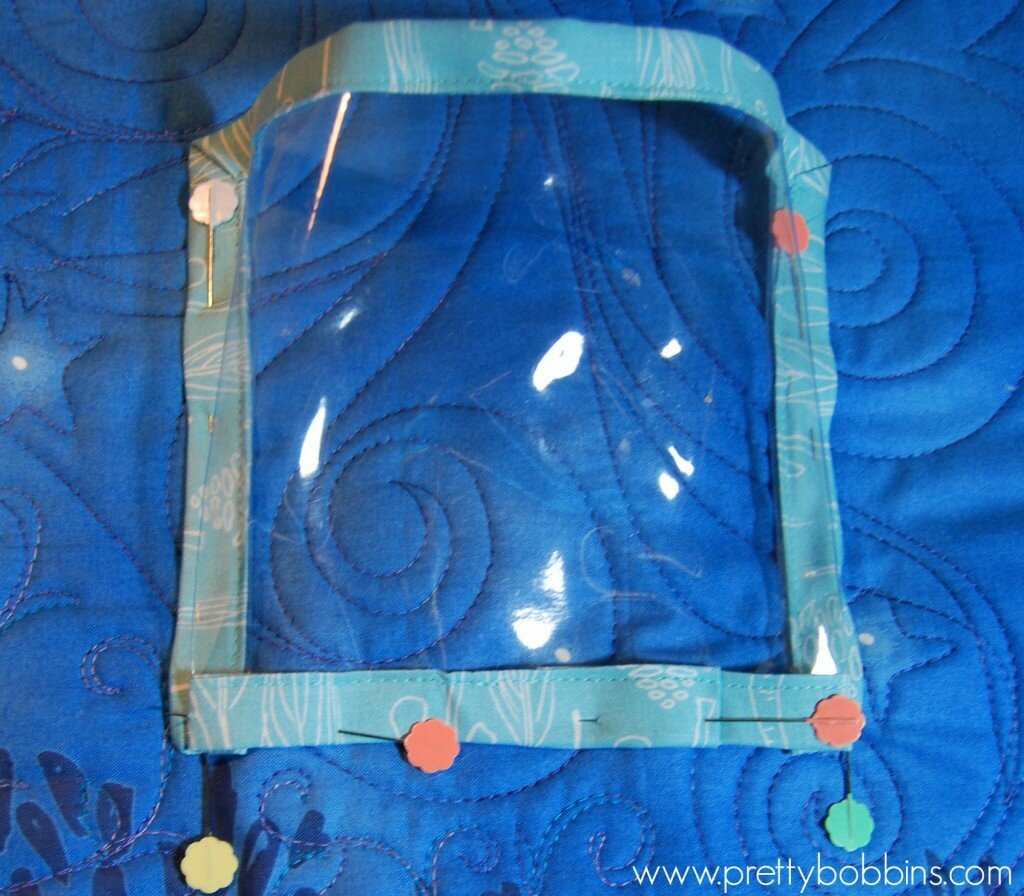
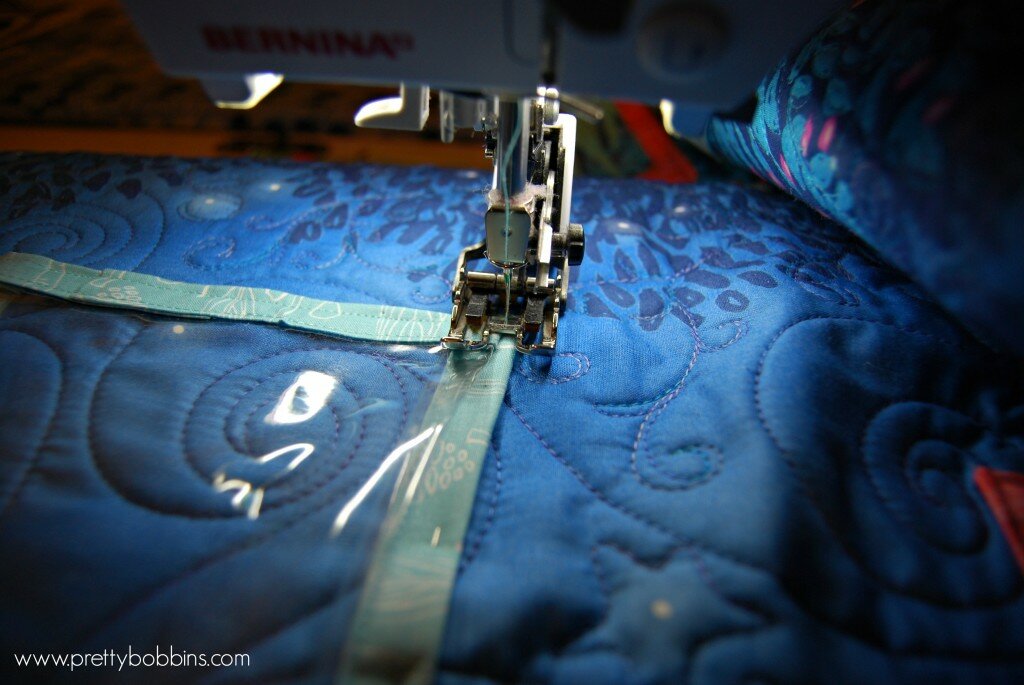
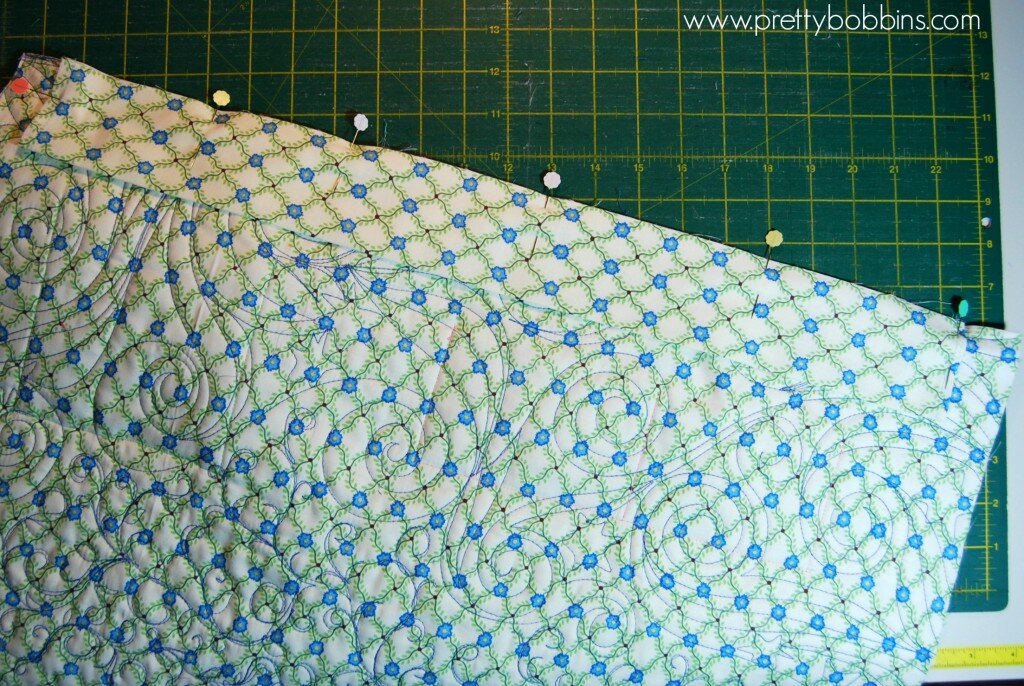
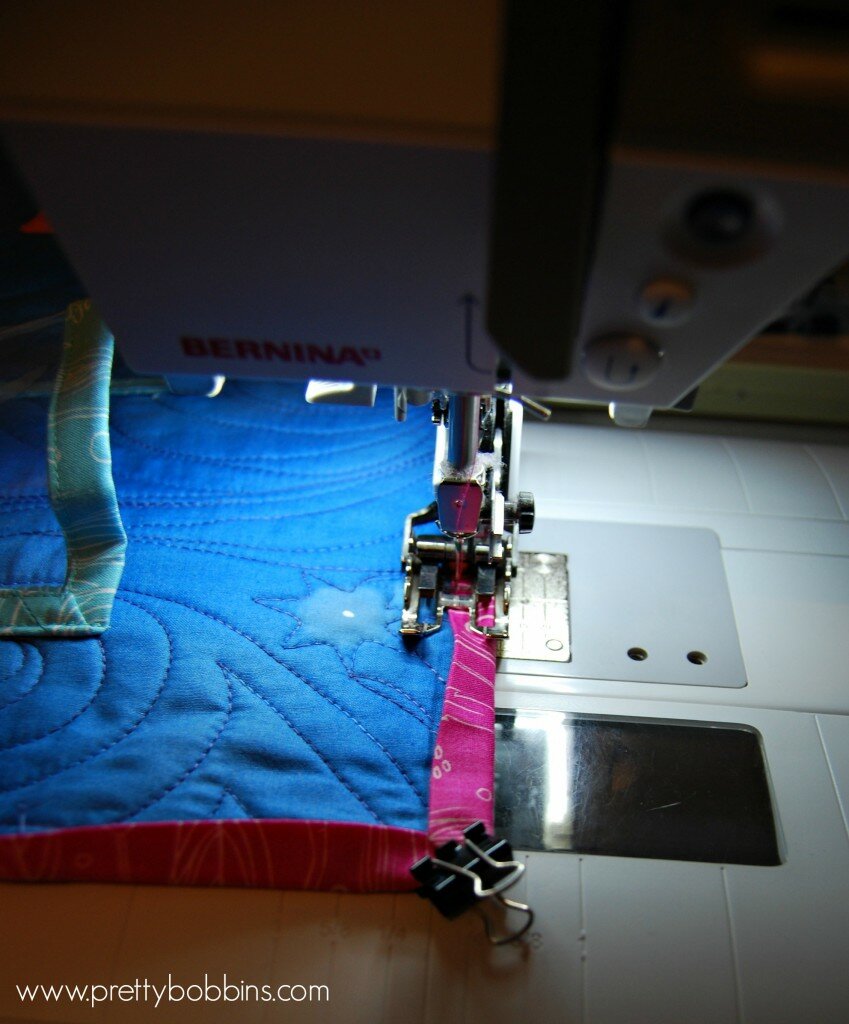
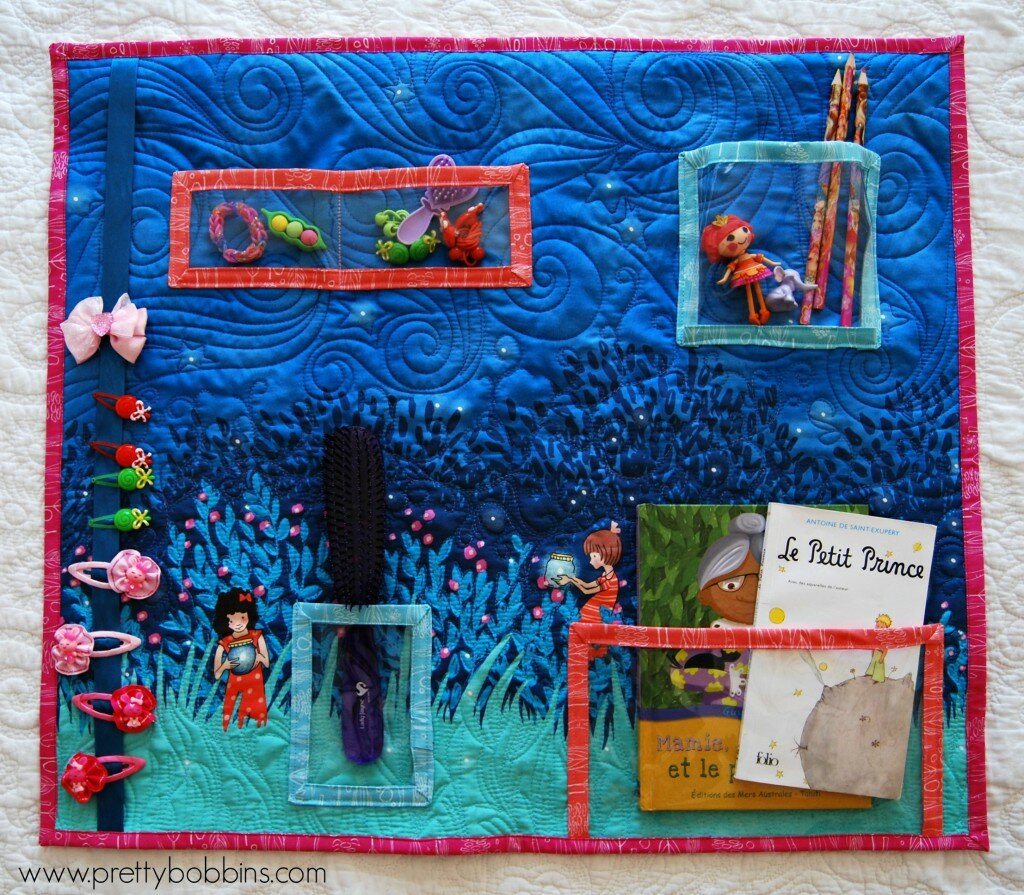
![]()
